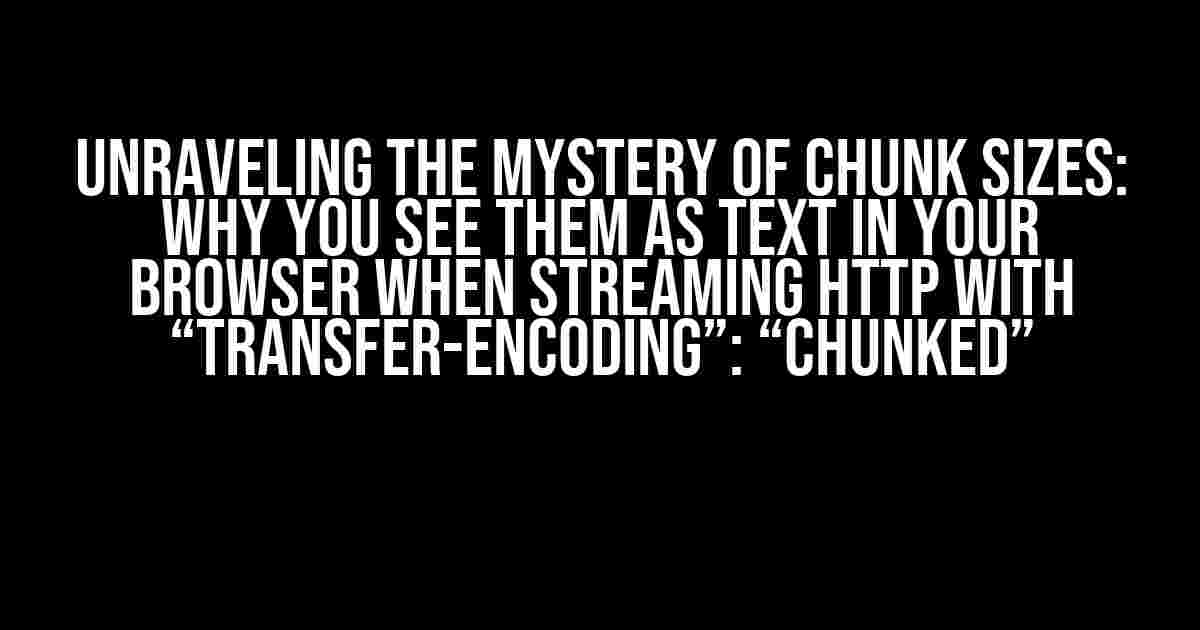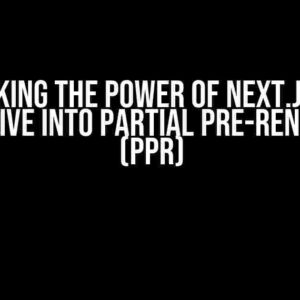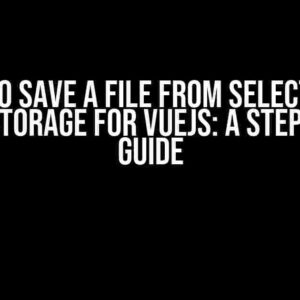If you’ve ever noticed weird numbers and special characters appearing in your browser while streaming HTTP content, you’re not alone. This phenomenon is more common than you think, and it’s all related to a lil’ thing called “chunked” transfer encoding. In this article, we’ll delve into the mysteries of chunk sizes, what they are, and why you see them as text in your browser when streaming HTTP with “Transfer-Encoding”: “chunked”. Buckle up, folks!
The Lowdown on Chunked Transfer Encoding
When a web server sends data to a client (your browser), it uses the HTTP protocol to facilitate the communication. One of the key aspects of HTTP is the way data is transferred between the server and client. There are two primary methods: “content-length” and “chunked”.
Content-Length vs. Chunked
When a server sends data with a fixed length, it’s called “content-length” encoding. The server specifies the exact size of the data in the HTTP headers, and the client knows exactly how much data to expect. This approach is straightforward and efficient, but it has its limitations. What if the server doesn’t know the exact size of the data beforehand? That’s where “chunked” transfer encoding comes in.
Chunked encoding breaks down the data into smaller, manageable chunks, each with its own size preceded by a hexadecimal value. This allows the server to send data in a streaming fashion, without knowing the total size of the content in advance. This is particularly useful for large files, dynamic content, or cases where the server doesn’t have the entire dataset readily available.
Why Do I See Chunk Sizes as Text in My Browser?
Now that we understand the basics of chunked transfer encoding, let’s get to the meat of the matter: why you see those pesky chunk sizes as text in your browser. When a server sends chunked data, each chunk is prefixed with a hexadecimal size value, followed by a CRLF (carriage return and line feed) separator. This makes it easy for the client to parse and process the incoming data.
14
{"json": "data"}
CRLF
13
{"json": "more data"}
CRLF
0
CRLF
CRLF
In the above example, the server sends three chunks of data: the first chunk contains 14 bytes of JSON data, the second chunk has 13 bytes, and the final chunk is empty (0 bytes). The CRLF separator indicates the end of each chunk. When your browser receives this data, it’s supposed to parse and render the content accordingly. However, if the browser is not configured to handle chunked encoding correctly, it might display the chunk sizes as plain text instead of rendering the actual content.
Troubleshooting and Solutions
So, why does this happen, and how can you fix it? Let’s explore some common scenarios and solutions:
Scenario 1: Browser Misconfiguration
If your browser is not configured to handle chunked encoding, it might not be able to render the content correctly. Check your browser settings to ensure that it supports chunked encoding. You can also try using a different browser to see if the issue persists.
Scenario 2: Server Misconfiguration
Sometimes, the server might not be configured to send chunked data correctly. Ensure that the server is sending the correct HTTP headers and that the chunked data is properly formatted.
Scenario 3: Proxy or Cache Issues
If you’re using a proxy or cache server, it might interfere with the chunked data. Try bypassing the proxy or cache to see if the issue resolves.
Scenario 4: Malformed Chunked Data
If the chunked data is malformed or corrupted, the browser might not be able to parse it correctly. Check the server logs for any errors or warnings related to chunked encoding.
Best Practices for Handling Chunked Data
To avoid chunked encoding issues, follow these best practices:
- Ensure your server is configured to send chunked data correctly, with proper HTTP headers and formatting.
- Use a browser that supports chunked encoding and check the browser settings to ensure it’s enabled.
- Verify that the chunked data is properly formatted and not corrupted.
- Avoid using proxies or caches that might interfere with chunked data.
- Monitor server logs for errors or warnings related to chunked encoding.
Conclusion
In conclusion, chunked transfer encoding is a powerful way to stream HTTP content, but it can sometimes lead to issues if not handled correctly. By understanding the basics of chunked encoding and troubleshoot common scenarios, you can resolve the problem of seeing chunk sizes as text in your browser. Remember to follow best practices for handling chunked data to ensure a seamless user experience.
Next time you encounter this issue, you’ll know exactly what’s going on and how to fix it. Happy debugging!
| HTTP/1.1 Header | Description |
|---|---|
| Transfer-Encoding: chunked | Specifies that the response body will be chunked and sent in a series of chunks |
| Content-Length: * | Specifies the exact size of the response body (not applicable with chunked encoding) |
Related Resources
For further reading and exploration:
- HTTP/1.1 Specification (RFC 2616) – https://tools.ietf.org/html/rfc2616
- Chunked Transfer Encoding on MDN Web Docs – https://developer.mozilla.org/en-US/docs/Web/HTTP/Headers/Transfer-Encoding
- HTTP Chunked Encoding on W3Schools – https://www.w3schools.com/tags/ref_httpmessages.asp
Frequently Asked Question
Curious about why you’re seeing chunk sizes as text in your browser when streaming HTTP with “Transfer-Encoding”: “chunked”? We’ve got the answers!
What is Transfer-Encoding: chunked?
Transfer-Encoding: chunked is a encoding mechanism that allows the sender to break up the data into smaller chunks, sending each chunk as a separate block. This encoding is used when the content length is unknown beforehand, like when you’re streaming data.
Why do I see chunk sizes as text in my browser?
When a server uses Transfer-Encoding: chunked, it sends the chunk size as a hexadecimal value, followed by a CRLF (carriage return and line feed), and then the chunk itself. The browser is simply displaying this information as it receives it, which is why you see the chunk sizes as text.
Is it normal to see chunk sizes in my browser?
Not usually! In most cases, the browser will hide this information from the user and only display the actual content. However, if you’re using a browser’s developer tools or a specific streaming setup, you might see the chunk sizes as text.
Can I prevent the browser from displaying chunk sizes as text?
Yes, you can! If you’re seeing chunk sizes in your browser, it’s likely because you’ve enabled a specific feature or tooling that’s causing this behavior. Try disabling any relevant developer tools or streaming settings, and the browser should display the content as expected.
Is Transfer-Encoding: chunked widely supported?
Yes, Transfer-Encoding: chunked is a standardized mechanism and is widely supported by most modern browsers and servers. In fact, it’s a mandatory feature for HTTP/1.1 compliance!






